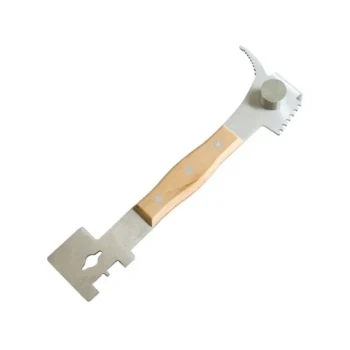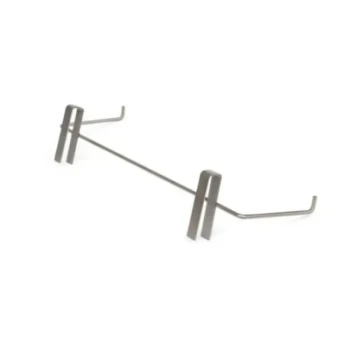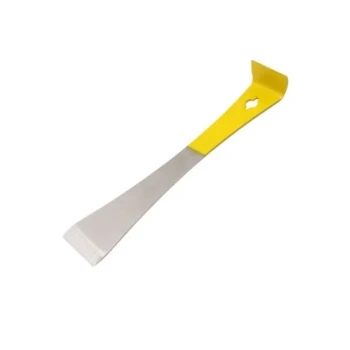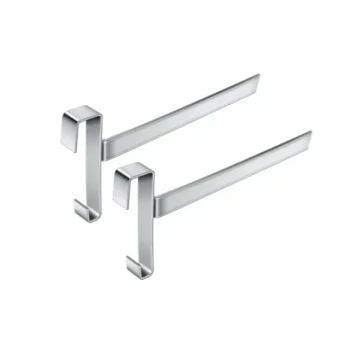The most effective way to ant-proof a beehive is to create a physical barrier that prevents them from ever reaching the hive entrance. While deterrents like cinnamon have a role, the core strategy relies on raising the hive on a stand and making its legs unclimbable using moats or sticky substances. This approach blocks the ants' path entirely, offering a reliable and long-lasting defense for your colony.
Ants are not just a nuisance; they can weaken or destroy a colony by stealing resources and creating constant stress. Your goal shouldn't be to repel ants from the area, but to physically block every possible path they could use to get inside the hive.
Why Ants Are a Threat to Your Hive
Before implementing a solution, it's crucial to understand the problem. Ants are a persistent threat that can undermine a colony's health.
They Steal Critical Resources
Ants are drawn to the hive for its rich resources. They will steal honey, pollen, and, in severe infestations, even bee eggs and larvae (brood). This theft directly depletes the food stores the colony needs to survive and grow.
They Create Defensive Stress
A constant invasion forces the bees into a state of high alert. Guard bees must expend valuable time and energy fighting off ants, distracting them from other vital tasks like defending against larger predators or managing hive ventilation.
They Can Overwhelm Weak Colonies
While a strong, populous hive can often manage a minor ant problem, a small nucleus colony, a newly installed package, or a hive weakened by other stressors can be completely overrun. For these vulnerable colonies, an ant infestation can be a final, fatal blow.
The Foundation of Ant Defense: The Hive Stand
A proper hive stand is not an accessory; it is the cornerstone of effective pest management.
Get Your Hive Off the Ground
A hive sitting directly on the ground presents infinite entry points for ants. Elevating the hive on a stand is the single most important step you can take, forcing all crawling pests to use the stand's legs as their only route.
Clear the Area Around the Stand
Once the hive is elevated, you must maintain the isolation. Keep grass, weeds, and any nearby vegetation trimmed back. A single tall blade of grass touching the hive body can act as a perfect bridge for ants, rendering your other defenses useless.
Creating an Unclimbable Barrier
With the hive elevated, the next step is to make the stand's legs impossible for ants to climb. This is where your primary defense is established.
Method 1: The Oil Moat (Most Effective)
This method creates a literal moat around each leg of the hive stand. Place each leg inside a larger, shallow can (like a tuna or cat food can) and fill it with a non-toxic oil, such as vegetable or mineral oil. Ants cannot cross the oil, and any that try will be trapped. Soapy water can also work but evaporates quickly and is less effective.
Method 2: The Sticky Barrier (Good Alternative)
This strategy uses a sticky substance applied in a band around each leg. While petroleum jelly works, it can get messy and collect dirt, requiring frequent reapplication. A more durable and purpose-built option is a horticultural barrier paste like Tanglefoot. It remains sticky for much longer and is designed for this exact purpose.
Method 3: The Powder Deterrent (Supplementary)
Deterrents are best used as a secondary line of defense. Sprinkling a ring of cinnamon powder or Diatomaceous Earth (DE) on the ground around the base of the hive stand can discourage ants from approaching. However, these powders are easily washed away by rain or dew and are not a reliable standalone solution.
Understanding the Pitfalls and Trade-offs
No solution is entirely "set and forget." Being aware of the potential downsides is key to maintaining an effective defense.
Moats Require Maintenance
Oil and water moats can fill with leaves, dead bees, and other debris. This organic matter can form a bridge for ants to cross. You must periodically check your moats and clear them out to ensure they remain effective.
Sticky Barriers Get Dirty
Petroleum jelly and Tanglefoot will inevitably become coated in dust, dirt, and dead insects. This coating can reduce their stickiness or even create a path for ants to walk across. These barriers need to be scraped off and reapplied once or twice a season.
Avoid Harming Your Bees
It is absolutely critical that these barriers do not harm your bees. Apply sticky substances or powders only to the middle of the hive stand legs, far from the hive entrance and any potential landing zones. Never place deterrents like cinnamon inside the main hive body, as this can interfere with the bees' sensitive scent communication.
Making the Right Choice for Your Colony
Your best strategy depends on the severity of your ant problem and the time you can commit to maintenance.
- If you face heavy and persistent ant pressure: The oil moat method is the most reliable, long-term solution for protecting your hive.
- If you are looking for a simpler, lower-maintenance option: A durable sticky barrier like Tanglefoot on the hive stand legs is highly effective but requires periodic cleaning.
- If you only have a minor or occasional ant problem: Sprinkling deterrents like cinnamon or Diatomaceous Earth around the base of the stand may be a sufficient and simple measure.
By focusing on physical barriers, you create a lasting defense that protects your colony's health, resources, and productivity.

Summary Table:
| Method | Key Feature | Best For | Maintenance Required |
|---|---|---|---|
| Oil Moat | Creates an impassable liquid barrier | Heavy, persistent ant pressure | Periodic cleaning of debris |
| Sticky Barrier | Long-lasting adhesive band | Simpler, lower-maintenance option | Reapplication 1-2 times per season |
| Powder Deterrent | Easy-to-apply ground ring | Minor or occasional ant problems | Frequent reapplication after rain |
Protect your apiary's investment and ensure colony health with professional-grade solutions from HONESTBEE.
Ant infestations can lead to significant losses in honey production and weaken your colonies. At HONESTBEE, we supply commercial apiaries and beekeeping equipment distributors with the durable, wholesale-focused supplies needed to implement effective, long-term ant defenses. From sturdy hive stands to reliable barrier materials, our equipment is built to support the scale and demands of your operation.
Contact our wholesale experts today to discuss your needs and secure the right equipment to safeguard your hives.
Visual Guide
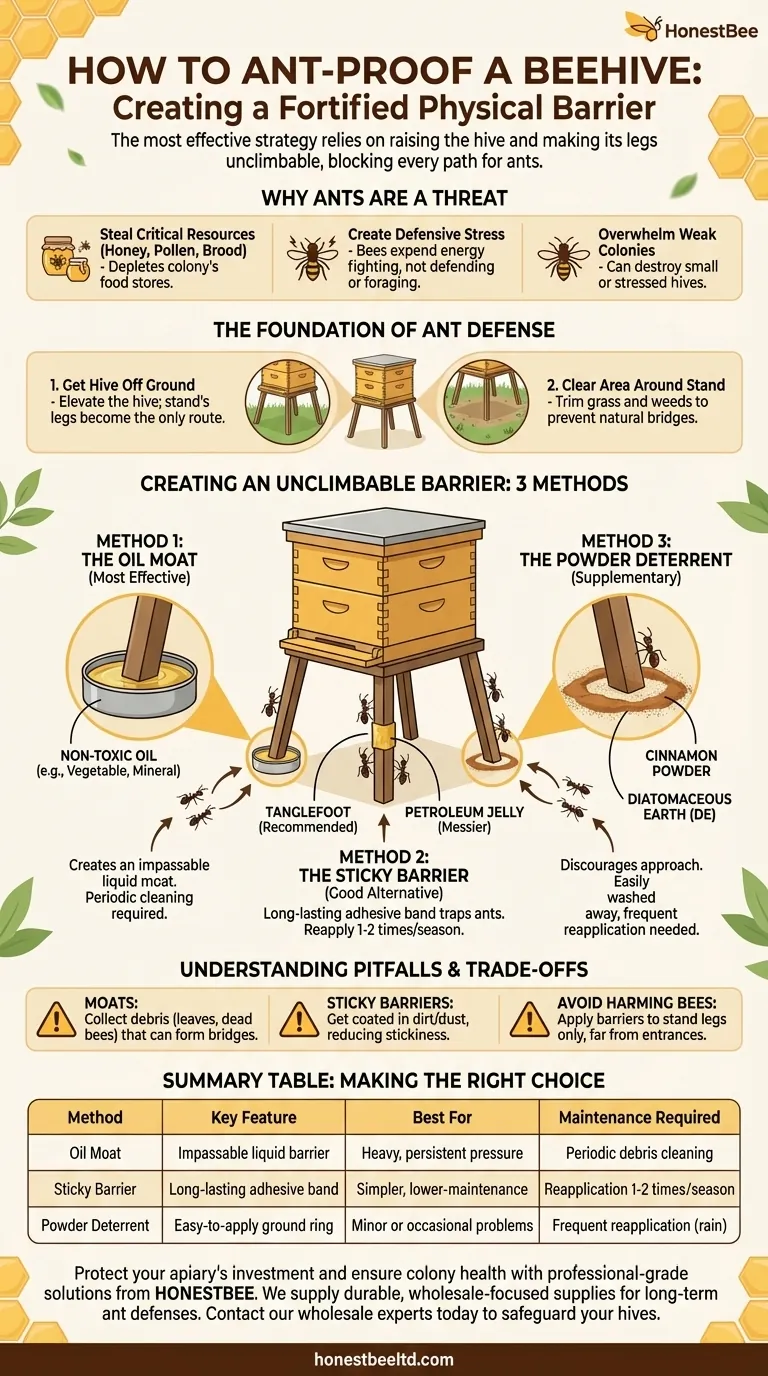
Related Products
- HONESTBEE Advanced Ergonomic Stainless Steel Hive Tool for Beekeeping
- Professional Galvanized Hive Strap with Secure Locking Buckle for Beekeeping
- Economy Polyester Beekeeping Jacket with Veil and Hat
- Beekeeping Jacket with Hood and Veil for Beekeepers
- Inner Beehive Cover for Beekeeping Bee Hive Inner Cover
People Also Ask
- What tools are used for cleaning frames? A Beekeeper's Simple 4-Tool Guide
- What are the basic tools for beekeeping? Essential Starter Kit for Safe & Successful Hive Management
- What is a hive tool and what are its uses? Master Your Hive Inspections with the Essential Beekeeper's Tool
- How should beekeepers handle bees when using a hive tool? Master Calm, Deliberate Techniques
- What is the hole in a hive tool for? A Multi-Tool for Apiary Repairs and Maintenance






